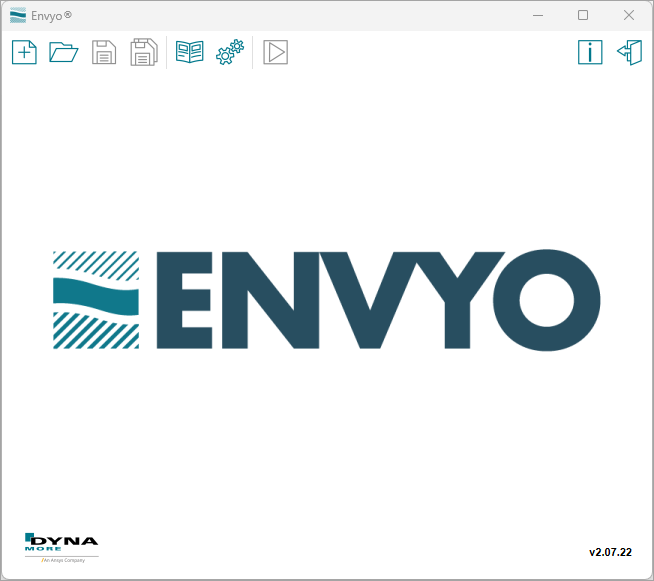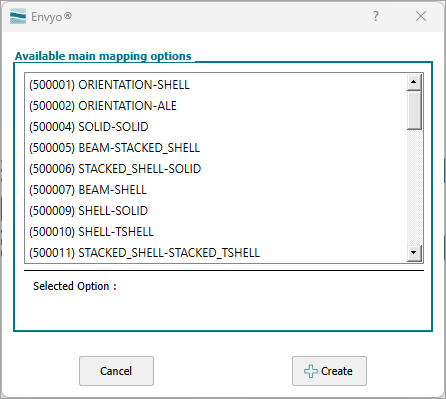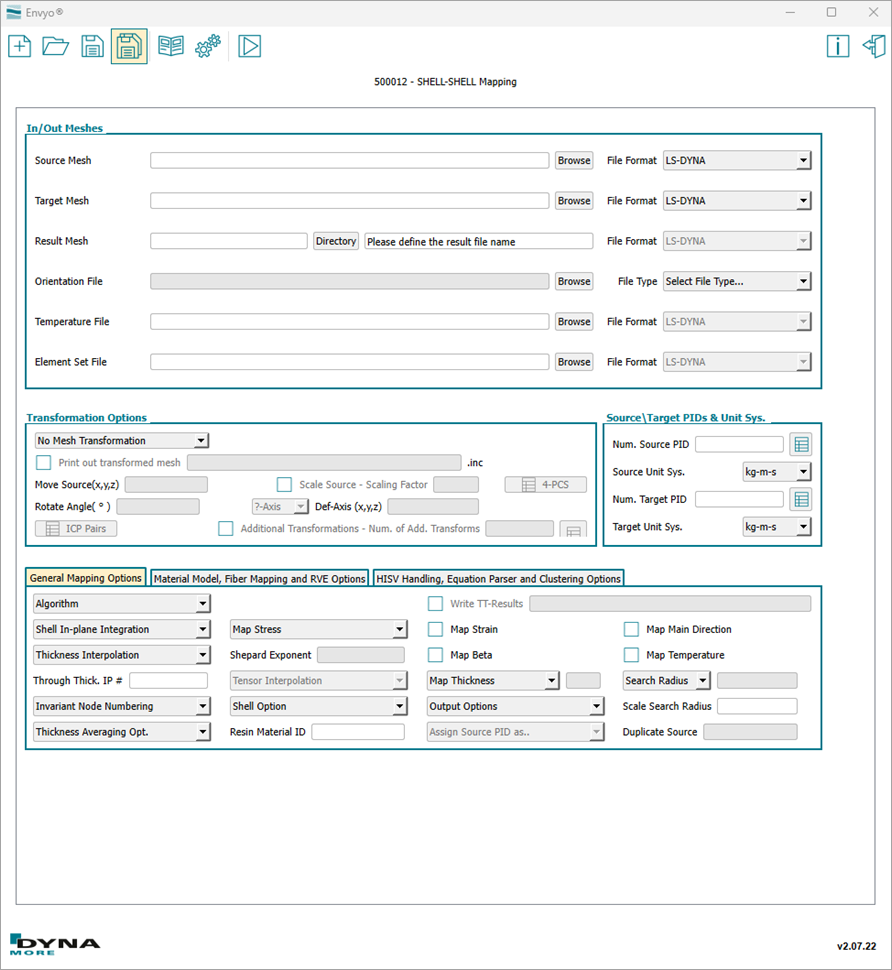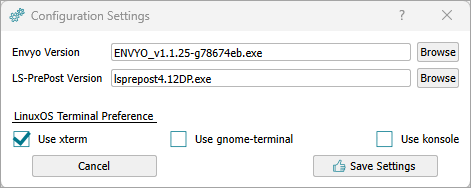This document provides a quick overview of the Envyo® application's user interface (UI). Once you open the application, the following startup window appears.

Use the upper taskbar for main commands.

The leftmost icon  opens a new case. Select from any of the existing use cases defined in the
pop-up window as shown in the figure below:
opens a new case. Select from any of the existing use cases defined in the
pop-up window as shown in the figure below:

The "Open Case" icon  opens an explorer window,
which enables you to open and manipulate an existing mapping.in
file.
opens an explorer window,
which enables you to open and manipulate an existing mapping.in
file.
Save files using the "Save"
 or
"Save As"
or
"Save As"
 icon.
When saving a new mapping case, the following window opens:
icon.
When saving a new mapping case, the following window opens:

First, you need to define the files needed for the mapping process using the In/Out Meshes section. They might be different depending on the use case. This is followed by Transformation Options and Source\Target PIDs & Unit Sys. sections for their respective defintions. Refer to the general descriptions of commands or specific workflow examples for additional information. In the same menu, switch between workflow-dependent settings, and define specific workflow settings with these options:
General Mapping Options
Material Model, Fiber Mapping and RVE Options
HISV Handling, Equation Parser and Clustering Options
Back in the Envyo® application's UI taskbar, the "Manual" icon
 opens the manual that can also be accessed by opening the pdf document inside the doc
folder, next to the GUI executable.
opens the manual that can also be accessed by opening the pdf document inside the doc
folder, next to the GUI executable.
The "Settings" icon  opens the following
Configuration Settings window.
opens the following
Configuration Settings window.

Select the path to the Envyo® application's main executable by using the
Browse button, and locating the case to run. Another option is to
use the "Run" icon  to run the Envyo® application cases directly from the
UI.
to run the Envyo® application cases directly from the
UI.
Note: When you define tranformation options with LS-PrePost (LSPP), it is best practice to select the utilized LSPP version in the Configuration Settings as well.
The "About" icon  provides the current version information and ways to contact
support for additional help.
provides the current version information and ways to contact
support for additional help.
The "Quit" icon  closes the Envyo® application's UI.
closes the Envyo® application's UI.
Once you establish a mapping workflow through the UI, you can easily edit it with a plain text editor such as Notepad++. You can start the Envyo® application using the UI, through the drag and drop method (see Installation and Setup), or the command line. The last option is particularly useful for establishing automated workflows.


